
System Shock is a 1994 first-person action-adventure video game developed by LookingGlass Technologies and published by Origin Systems. It was directed by Doug Church with Warren Spector serving as producer. The game is set aboard a space station in a cyberpunk vision of the year 2072. Assuming the role of a nameless security hacker, the player attempts to hinder the plans of a malevolent artificial intelligence called SHODAN.
Star Fox is an arcade style rail shooter and third person action-adventure video game series created by Shigeru Miyamoto, produced and published by Nintendo. The games follow the Star Fox combat team of anthropomorphic animals, led by chief protagonist Fox McCloud. Gameplay involves many adventures around the Lylat planetary system in the futuristic Arwing fighter aircraft, in other vehicles, and on foot. The original Star Fox (1993) is a forward-scrolling 3D rail shooter, but later games add more directional freedom.

Lode Runner is a 2D puzzle-platform game, developed by Doug Smith and published by Broderbund in 1983. Its gameplay mechanics are similar to Space Panic from 1980. The player controls a character who must collect all the gold pieces in a level and get to the end while being chased by a number of enemies. It is one of the first games to include a level editor.

Paradroid is a Commodore 64 computer game written by Andrew Braybrook and published by Hewson Consultants in 1985. It is a shoot 'em up with puzzle elements and was critically praised at release. The objective is to clear a fleet of spaceships of hostile robots by destroying them or taking them over via a mini-game. It was later remade as Paradroid 90 for the Commodore Amiga and Atari ST home computers and as Paradroid 2000 for the Acorn Archimedes. There exist several fan-made remakes for modern PCs. In 2004 the Commodore 64 version was re-released as a built-in game on the C64 Direct-to-TV, and in 2008 for the Wii Virtual Console in Europe.
Strike is a series of video games created by Mike Posehn, John Patrick Manley and Tony Barnes released between 1991 and 1997 by Electronic Arts for a number of video game systems. The games are multi-directional shooters viewed from an overhead or top-down perspective. The first three games in the series were 2D and used isometric sprites to give the illusion of 3D depth since real-time 3D polygon rendering wasn't possible at the time. The series made the jump to real-time 3D graphics with the release of Soviet Strike which used a brand new engine built for fifth generation gaming consoles.
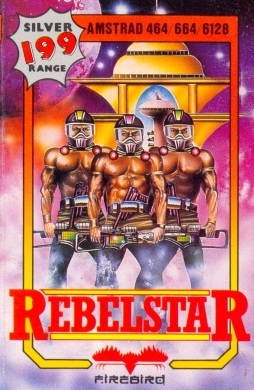
The Rebelstar games are a series of turn-based tactics video games designed by Julian Gollop. Rebelstar Raiders was published in 1984 by Red Shift for the ZX Spectrum. It was reworked in machine code as Rebelstar, published by Firebird in 1986. A sequel, Rebelstar II, was published in 1988 by Silverbird. Rebelstar, but not its sequel, was also adapted for the Amstrad CPC home computer.
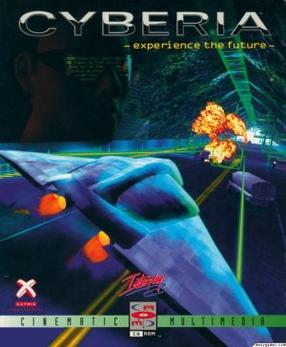
Cyberia is a science fiction action adventure video game released for MS-DOS in January 1994, and released two years later on the PlayStation, Sega Saturn, 3DO and FM Towns consoles. A sequel, Cyberia 2: Resurrection, was released in 1995 for both DOS and Windows 9x formats.

Carrier Command is a 1988 video game published by Rainbird for the Amiga, Atari ST, IBM PC compatibles, ZX Spectrum, Macintosh, Commodore 64, and Amstrad CPC. Carrier Command is a cross between a vehicle simulation game and a real-time strategy game where players control a robotic aircraft carrier.
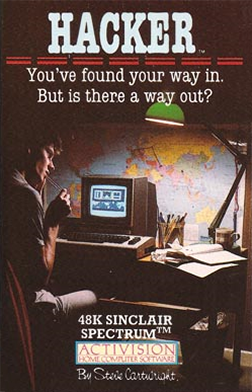
Hacker is a 1985 video game by Activision. It was designed by Steve Cartwright and released for the Amiga, Amstrad CPC, Apple II, Atari 8-bit family, Atari ST, Commodore 64, Macintosh, DOS, MSX2, and ZX Spectrum.

Pipe Mania is a puzzle video game developed by The Assembly Line for the Amiga and published in 1989. It was ported to several other platforms by Lucasfilm Games as Pipe Dream; the company distributed the game in the US. The player must connect randomly appearing pieces of pipe on a grid to a given length within a limited time.

Tau Ceti is a video game published in 1985 by CRL for the ZX Spectrum and converted to the Amstrad CPC, Amstrad PCW, Atari ST, Commodore 64, and MS-DOS. It was designed and programmed by Pete Cooke. The world, set on Tau Ceti III orbiting Tau Ceti, is displayed using 3D graphics with shadow effects. The planet has a day and night cycle.

Sanxion is a horizontally scrolling shooter developed by Stavros Fasoulas for the Commodore 64 and published in 1986 by Thalamus Ltd. It was the first game released by Thalamus. A ZX Spectrum port followed in 1989. Fasoulas also wrote Delta and Quedex.
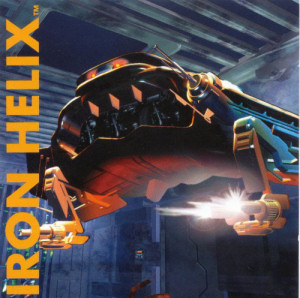
Iron Helix is a FMV adventure video game made for Windows, Macintosh, and the Sega CD. It was an early example of a CD-based game, including video elements integrated with conventional 2D maps and controls. The game was designed by Drew Pictures and distributed by Spectrum HoloByte, with Peter Stone of Xorcist creating the soundtrack as well as all sound design.

Hacker II: The Doomsday Papers is computer game written by Steve Cartwright and published by Activision in 1986. It is the sequel to the 1985 game Hacker. Hacker II was released for the Amiga, Apple II, Apple IIGS, Amstrad CPC, Atari ST, Commodore 64, IBM PC, Macintosh, and ZX Spectrum.

G-Police is a 1997 combat flight simulation video game developed and published by Psygnosis for PlayStation and Microsoft Windows.
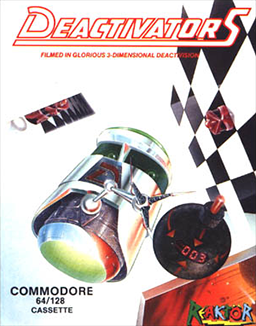
Deactivators is a 1986 puzzle video game designed by David Bishop and Chris Palmer, developed by Tigress Marketing and System Software, and published by Ariolasoft's action game imprint Reaktor. The player controls bomb disposal robots known as deactivators and must use them to deactivate bombs planted by terrorists in five research complexes. The concept for the game came from a brainstorming session between Bishop and Palmer; its design and development took five to six months to complete. It was released for the Amstrad CPC 464, Commodore 64, and ZX Spectrum platforms in October 1986.
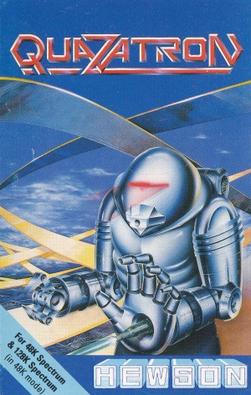
Quazatron is an action game developed by Graftgold, and released in 1986 by Hewson Consultants. It was designed by Steve Turner for the ZX Spectrum.

A View to a Kill are two separate video games released in 1985 and based on the James Bond film A View to a Kill. The first, an action game titled A View to a Kill: The Computer Game, was developed and published by Domark. It was available for the ZX Spectrum, Amstrad CPC, Commodore 64, MSX, and Oric. The second game, James Bond 007: A View to a Kill, is a text-based adventure for MS-DOS, Macintosh, and Apple II. It was developed by Angelsoft, and published by Mindscape.

Falklands '82 is a 1986 turn-based strategy video game developed and published by Personal Software Services for the ZX Spectrum and Commodore 64. It is the fifth instalment of the Strategic Wargames series. The game is set during the 1982 Falklands War and revolves around the Argentine occupation and subsequent British re-capture of the Falkland Islands. The player controls the British Task Force as they must either defeat all Argentine forces on the archipelago or re-capture every settlement.

Hacknet is a 2015 video game that allows the player to perform simulated computer hacking.



















